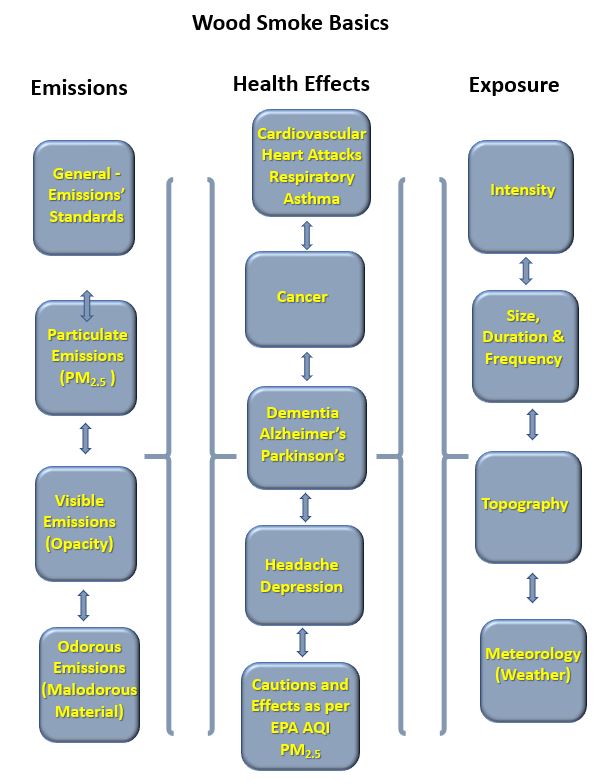An Overview
Wood smoke from open burning, indoor appliances, and outdoor wood boilers and the emissions in the wood smoke result in pollution of the indoor and outdoor air in the vicinity of the fire source and well beyond with attendant adverse health effects. An awareness of wood smoke emissions, wood smoke health effects and wood smoke exposure is crucial to a basic understanding of the dangers of wood smoke.
Wood Smoke Emissions – Wood smoke air pollution is a mix of toxic solids, liquids and gases in the form of various measurable emissions such as particulate matter (PM) emissions, visible emissions (smoke), and malodorous (odor) matter emissions.
Wood Smoke Health Effects –The scope of adverse health effects from wood smoke are directly related to its emissions e.g., the amount or concentration of particulate matter (PM2.5 – particles just 2.5 microns in diameter), the density (opacity) of the wood smoke, and the malodorous matter emanating from the wood smoke.
Wood Smoke Exposure- Exposure to wood smoke is related to its dispersion, its emissions in indoor and outdoor spaces, the type of wood fuel, the size and location of the fire and the duration and frequency of burning as well as the surrounding topography and weather at the time.
The diagram below illustrates these key aspects of Wood Smoke Basics. Click the desired topic in the drop-down menu to explore these topics further.


